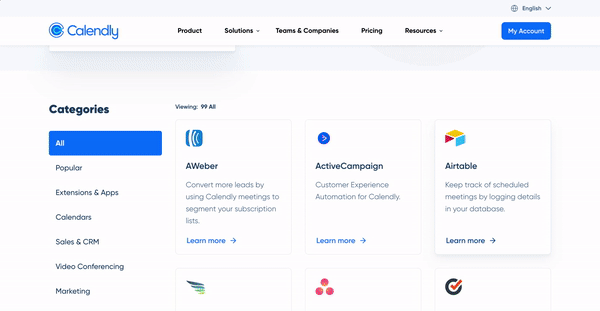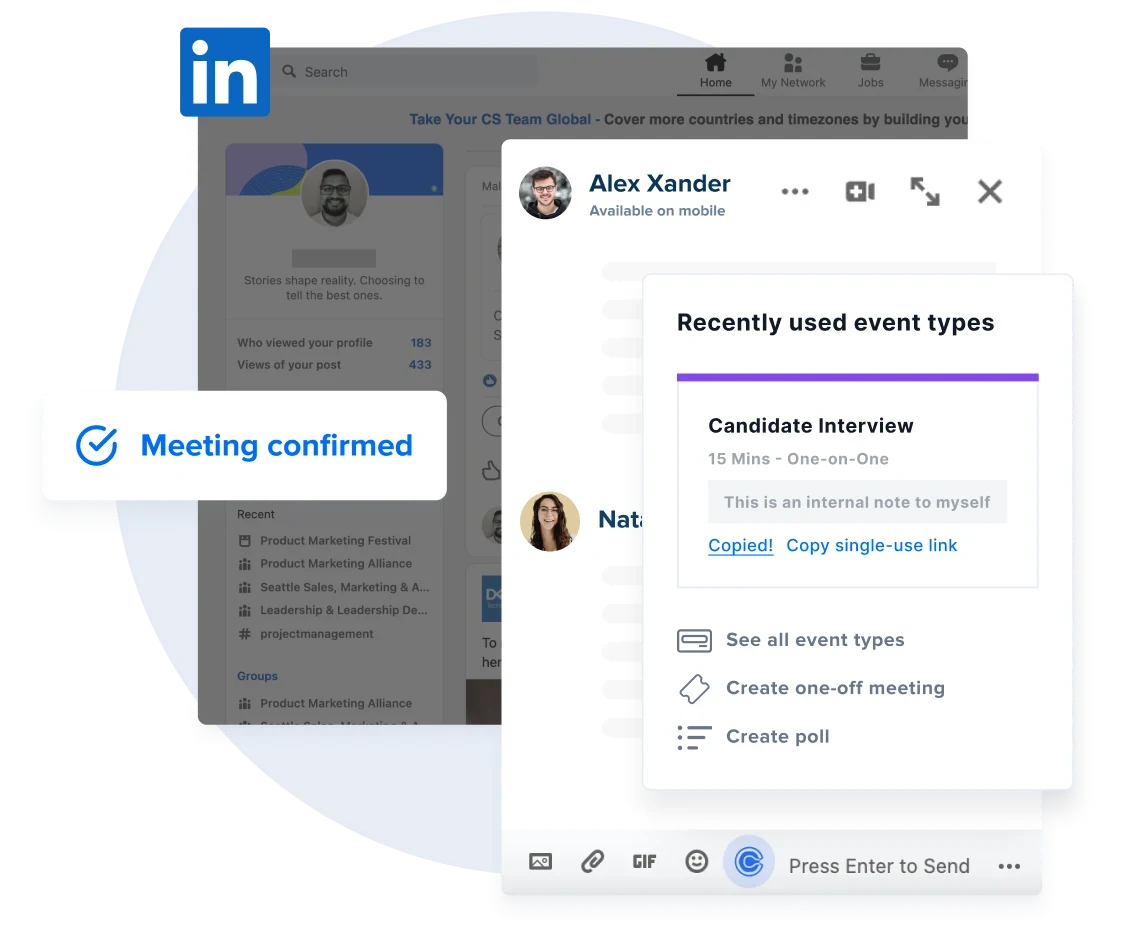6 ways to automate the recruitment process: Tips, benefits, and tools
Here’s how automation can simplify your recruitment process so you can hire top talent faster.
Table of contents
What is recruiting automation?
You can automate many of the repetitive, time-consuming tasks in the recruitment process, like posting and reposting job descriptions, pre-screening applications, and scheduling interviews.
Removing these manual tasks from your team’s plate gives them more time to connect with top talent and create a top-tier candidate experience. The result? Better hiring decisions, faster time to fill, higher employee retention rates, and lower cost-per-hire.
You can automate tasks at every stage in the recruitment process:
Preparing the job description
Sourcing potential candidates
Resume screening
Candidate communication
Interview scheduling
Onboarding
In this guide, we’ll teach you how to figure out what parts of your hiring process could use an update, and how automation can help you make improvements.
Identify gaps in your hiring process
The hiring process is a beast with many parts, so how do you know which parts to automate? Start by identifying opportunities for improvement.
You can evaluate each step in the recruitment process individually. The most effective method is to submit test applications and then study the process from both the job seeker and recruiter perspectives. Is each step being done correctly? Who’s accountable? And, what kind of metrics do you have for assessing the process?
This testing routine can help highlight gaps in the hiring process. You might notice your screening process is letting through subpar resumes, or candidates are waiting too long to schedule interviews.
Some of the most common recruiting challenges include:
Great candidates never see your job posting
Poor matches slip through your screening process
Inefficient communication wastes time
Scheduling mix-ups cause delays
Once you figure out your specific speed bumps, you can successfully address them with automation technology. We’ll walk you through six ways to improve the recruitment process with automation.
6 ways to automate your recruitment process
1. Preparing the job description
Job descriptions give potential candidates their first impression of your organization. A well-written, informative description tells candidates you know what you’re looking for and you value their time. They’re also a great opportunity to showcase your organization’s commitment to inclusivity and diversity.
Artificial intelligence and machine learning programs can help your team write job descriptions that satisfy all these requirements. Tools like Datapeople, Seekout, and Textio evaluate your content for certain terms and phrases, make sure you’ve included all the important details, and suggest edits that help your job listing appeal to a more diverse talent pool. At Calendly, we use Textio to recommend language for clarity, inclusivity, and interest.
Hot tip
Instead of writing each job description from scratch, use a template. Templates contain messaging included in all of your job postings — information about the company, benefits, and application process — so you only have to plug in the job specifics. Not sure where to start? Try Calendly’s job description template!
2. Posting open positions on job boards
There are a ton of job boards out there, and posting manually on each one is extremely time-consuming. Speed up this process by choosing an applicant tracking system (ATS) that integrates with all the major job boards. An ATS functions like a control room for the entire hiring process, from job postings to candidate communication.
With an ATS, you can build automated posting schedules so your job descriptions get posted and reposted to job boards automatically, freeing up your team for more important tasks.
Hot tip
Choosing the right ATS can help your team effectively and efficiently manage the recruitment process while offering an easy, positive candidate experience.
Some features to look for in an ATS include candidate relationship management (CRM), job board posting, resume parsing, employee referrals, customizable templates, careers site building, and reporting and analytics.
3. Resume screening
Resume screening is one of the most time-consuming parts of the talent acquisition process. Until recently, recruiters had to manually assess each resume and cover letter for specific skills, experience, and fit.
When a job opening gets hundreds of applications, going through each resume takes time away from actually getting to know your best candidates in the interview period.
A robust ATS can save hiring teams a huge amount of time and effort by streamlining this process, automatically weeding out spammy and ill-fitting resumes when you screen candidates. This lets recruiters focus on the best resumes first, where the tool indicates a good match. If none of the top candidates pan out, recruiters still have access to all the other applicants to continue their search.
These systems scan resumes for specific keywords and weed out ones that don’t match the job description.
An ATS does this in four basic steps:
Scan your ad for the job title, desired skills, and required experience.
Create an ideal candidate profile.
Assess and rank incoming resumes based on how well they match the profile.
Forward top talent to recruiters to review.
Hot tip
If you’re using an ATS to scan resumes, set candidates up for success by providing clear application instructions in your job description, emphasizing keywords you want to see in their resume or cover letter.
Michael Lan, senior resume consultant at Resume Writer Direct, notes that including a call to action in a job description (like asking candidates to include a code word in their cover letter) can “weed out applicants who are not able to follow directions, and demonstrate a clear lack of attention to detail.”
4. Candidate communication
Did you know that nearly two-thirds of candidates say they lose interest in a job if they don't hear back within two weeks of the initial interview? Ghosting potential candidates sends a bad message to potential employees and doesn’t do your employer brand any favors.
Following up with candidates quickly and politely shows that you respect their time and effort. Even short messages can have a big impact, like acknowledging you received a resume or sending a thank-you note after an interview.
You can automate a lot of these small, repetitive interactions with an ATS like Lever or Greenhouse, so your team can stay in touch with candidates without spending too much time writing emails. ATS tools also build in easy personalization, so automated messages still have a personal touch.
Automatic reminders for interviews and take-home tasks are also extremely helpful for candidates. This type of communication shows candidates you’re organized and want them to succeed — and reduces time-consuming scheduling mix-ups.
That said, it’s important to remember automation can’t completely replace human interactions. Short automated messages create a better experience for recruiters and candidates by keeping everyone in the loop, but more personal messages should always be written by a human.
For example, if a candidate has been through several rounds of interviews, it’s a good idea to start with a template but then polish and personalize that language, whether you’re writing a rejection or a job offer.
Hot tip
With Calendly Workflows, recruiters can automate interview reminders and confirmations via email or SMS. You can even customize these messages to share important info that helps candidates prepare for their interviews. Workflows create a consistent, helpful candidate experience while saving time for everyone on your team. Interviewers encounter fewer no-shows, and recruiting coordinators don’t have to spend time manually emailing each candidate. That’s a win-win.
5. Self-serve interview scheduling
In a Calendly survey, 78% of recruiting professionals say they’ve lost a candidate because they couldn’t schedule interviews quickly enough.
Scheduling automation tools like Calendly help recruiters coordinate interviews in just a few clicks, cutting down on time-consuming email back-and-forths. Candidates can self-schedule by selecting their preferred interview time, whether it’s a group or 1:1 interview. Once they pick a time that works for them, Calendly automatically adds the interview details to everyone’s calendar.
Before Calendly, Odlenika Joseph, Muck Rack’s Talent Operations Specialist, spent 80% of her time scheduling and rescheduling candidate interviews.
Now, with scheduling automation, candidates can book interviews directly with the right team member’s calendar. Calendly has helped Muck Rack reduce time-to-hire by eight days.
Odlenika uses Calendly’s Managed Events to standardize meeting templates and ensure each stage of the hiring process contains pre-planned meeting Workflows, custom redirects, and follow-up events.
Hot tip
Invite qualified candidates to self-schedule as soon as your team decides to interview them, and set up your scheduling platform to limit how far in advance they can book. When candidates can only book within a set time frame — for example, the next two weeks — you keep their engagement high and your hiring process moving forward.
6. Onboarding tasks
The onboarding process for new employees has a lot of moving parts, and there needs to be communication between a lot of different teams, like training, HR, recruiting, and payroll.
Automation can help streamline these processes, making the experience more effective and even fun for new hires. Beyond creating a great first impression, a positive onboarding experience can:
improve new employee retention by 82%
lead to hires being 18x more committed to their employer
get new employees to full proficiency 34% faster
There are a lot of opportunities for automation in onboarding. You can automate training sessions with software like Lessonly, which can ensure consistent quality with pre-recorded videos and provide learning metrics. You can also follow in Calendly’s footsteps and ask new hires to record a Loom introducing themselves, which helps everyone put faces to names.
Another great tactic is to automate new employees’ schedules.
With Calendly, new employees won’t get overwhelmed trying to schedule onboarding meetings with multiple departments. No double bookings or long, cross-departmental email chains — scheduling can be done in just a couple of clicks, no matter how many people are involved or what type of meeting you need. For example, human resources can use Meeting Polls to find a time to meet with every member of an onboarding class for a one-off training.
Hot tip
You can fast-track even more pieces of the onboarding process with Zapier, a task automation platform that lets you connect applications and automate workflows. For example, you can use Zapier to connect Calendly and DocuSign, then automatically send a signature request to a new hire when an onboarding meeting is scheduled. That way, you can jump right into the meeting without spending valuable time reviewing long contracts.
Choosing the right recruitment automation software
The recruiting software you choose should make the recruiting process easier without a steep learning curve or frustrating limitations.
Here are a few things to look for when choosing a recruiting software solution.
Integrations with the tools your team already uses and loves
Your recruitment automation tools should work well with your team’s existing tech stack, so you can boost productivity without reinventing the wheel.
Calendly offers over 100 integrations, including video conferencing, ATS, project management, and analytics. It’s easy to use wherever and however your team works.
Tools that play well together create a better experience for candidates and recruiters alike. Take video interviews, for example. Calendly integrates with popular video conferencing platforms like Zoom, Google Meet, GoTo Meeting, and Microsoft Teams, so you can automatically add video conference details to Calendly events. No one has to scramble to create or find a Zoom link right before a big interview.
Features that boost productivity for your team
You want a recruitment automation tool that lets employees spend less time on repetitive tasks and more time doing great work. Automation means less time trying to match candidate and interviewer availability, and more time sourcing and connecting with top-notch candidates.
For example, Calendly’s mobile apps, browser extensions, and Outlook add-in make it simple for employees to use scheduling automation wherever they work, so your entire team gets a productivity boost regardless of their personal set-up. Calendly’s LinkedIn integration plugs straight into your browser, so recruiters can easily share availability with candidates in direct messages and book meetings faster.
Calendly’s Round Robin Event Types also make scheduling easier for hiring teams and interviewees. Instead of recruiters having to sort through multiple schedules, candidates simply choose their preferred meeting times, and the system automatically assigns the meeting to the next available team member. This feature helps manage your hiring team’s workload while offering more open time slots to interviewees.
An easy, consistent candidate experience
Your recruitment technology should make the hiring process better for candidates, too. Applying and interviewing for jobs can be stressful — trying to navigate your software shouldn’t add to that stress!
We’ve already touched on how self-service scheduling and automatic interview reminders and follow-ups can improve candidate engagement. Here are a few more Calendly features that help set candidates up for success:
Calendly adjusts for differences in time zones across platforms, reducing confusion and the risk of interview no-shows.
Need to schedule a group interview? Calendly's team scheduling features make it easy for candidates to choose a time when all interviewers are available.
Calendly’s Managed Events allow recruiters to establish standard practices for interviews, such as title, duration, and branding, and push those out to all hiring managers and interviewers.
Create a faster, easier recruitment process with automation
Adding automation to your recruitment strategies can help your team create an excellent candidate experience while freeing up time for what recruiters do best: connecting with more potential employees and hiring top talent.
“It’s about efficiency and making more out of less. Leveraging Calendly has enabled everyone on my team to take on a ton of projects that are really impactful to the recruiting team and the organization at large.”
Erica Raphael
VP of People at Muck Rack
Ready to see what scheduling automation can do for your recruiting team? Learn more about Calendly's recruiting solutions, or dive right in with a free trial.
Get started with Calendly
Ready to make scheduling easier than ever?
Related Articles
Don't leave your prospects, customers, and candidates waiting
Calendly eliminates the scheduling back and forth and helps you hit goals faster. Get started in seconds.



